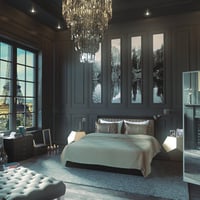


I generally turn off all ambient lights from Daz Studio, because we already have bounce light in Lux. There are no ambient lights in Lux, so those either get converted to Mesh Lights if we have that setting checked, or they do not transfer at all. There are point light and spot light equivalents in Lux, so those get automatically transferred by the Reality plugin. How lights transfer from our Daz Studio scene, will depend a lot on how we light our scenes. Rendered in Reality + LuxRender, with postwork in Photoshop. This will turn off all the light emitter settings for the dragon’s mouth.
#LUXUS FOR DAZ STUDIO SKIN#
I needed to do some test renders to set the visibility of the water to something that looked good in the scene, but that was very doable and the results are well worth it.Īgain, the face and skin of the girl looks better in the LuxRender image. In the Dragon Girl scene below, I changed the material of the two dragons to metal, I also changed the trim of her dress to metal, and I changed the pond at her back to water. Most of the time, I only need to change metal and water surfaces. There are already pre-made material groups, including cloth, metal, glass, water, and more.

The material editor in the Reality plugin is easy to use.For example, in the T-Shirt Girl and Victorian Girl examples above, I didn’t do any material editing at all. I haven’t had to do much material editing in the plugin. Many of the Daz Studio materials get automatically transferred over to Lux pretty well by the Reality plugin.The key work in creating a good render in Lux is in setting up materials and lights. How Much Work Is Required to Create a Good Render in Lux? I have seen some great looking images that were created with the Reality plugin.I like the dynamic cloth system in Poser a lot better than in Daz Studio, so I ultimately want to also render in Lux from Poser. There is a version of Reality for Poser.The Reality team does a good job in updating their plugin with bug fixes and adding in great new features.However, I picked Reality because based on what I have seen – Luxus is another plugin that allows us to render Daz Studio scenes in LuxRender. There is also a version of the Reality plugin available for Poser. Reality is an awesome plugin that allows me to easily import Daz Studio scenes into LuxRender. I get the best results by using both Lux and 3Delight. However, it does mean that the Lux images that I render almost always turns out looking better than the ones that I get from just Daz Studio alone. This does not mean that all images rendered in Lux will be superior to those rendered in Daz Studio, or that one cannot render great looking images in Daz Studio. In general, I can light a scene in Lux better and more easily than with 3Delight, because some of the lighting effects that I would need to fake in 3Delight are already handled for me by the renderer in Lux. One of the key things with Lux is that light bounces are captured, so we can light a scene pretty well with fewer lights. What does this mean compared to the Daz Studio renderer (3Delight)? Based on state of the art algorithms, LuxRender simulates the flow of light according to physical equations, thus producing realistic images of photographic quality. LuxRender is a physically based and unbiased rendering engine.


 0 kommentar(er)
0 kommentar(er)
